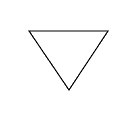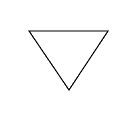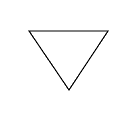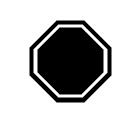
The Pattern Special Requirement has been replaced in the APT User Interface with the use of Pattern containers. See 5.19 Exposure Containers: Exposure Groups, Coordinated Parallels and Patterns.



The following Special Requirements apply to individual exposures within a visit. All instances of <exposure-list> or <exposure> refer only to exposures in the same visit as the exposure carrying the requirement.
Separate target acquisition exposures must be specified at the beginning of most visits, depending on the target and the science instrument used. Target acquisition exposures are used to remove coordinate uncertainties and to identify targets. Once a target acquisition has been performed, HST can move the target from aperture to aperture or move the aperture around the target (with slew accuracies of about 10 milliarcseconds) as long as the same guide stars can be used. Onboard acquisitions are automatically identified by the software. Acquisition exposures must still be specified, but no Special Requirement is needed or appropriate.
Acquisition of a target using an offset target requires that both be defined in the Target List(s). The first exposure will be an onboard or interactive acquisition of a target from which the offset will be made. This target must be designated as an offset acquisition target by appending -OFFSET to the end of the target name (see Tableá3.1: Designations of Special Targets). The appropriate offsets will automatically be made from this position to slew to the target of interest.
Interactive acquisitions may no longer be performed with HST. However, the same results can be achieved in other ways, and you should consult your Program Coordinator for more information.
This Special Requirement is used to apply offsets to ACS coronagraphic observations that use one of the spot Apertures (HRC-CORON1.8, HRC SUB1.8,or HRC-CORON3.0). ACS target acquisition ends with the target positioned at the nominal location of the small coronagraphic spot. A slew to the nominal location of the large spot or occulting finger precedes any sequence of observations at either of those locations. However, the ACS coronagraphic spots have been observed to drift randomly up to a few pixels per month. This Special Requirement is used to correct for the drift away from the nominal spot location.
STScI will monitor the spot positions weekly. When ACS coronagraphic observations with USE OFFSET are scheduled, STScI will calculate the required offset from the most recent monitoring data. The offset will be loaded into spacecraft memory via real-time command, and used by a special slew command scheduled for this purpose. No observer action is required.
The <id> is an alphanumeric string of up to six characters in length. Although there is no formal requirement for it, we suggest using your proposal number, followed by a number such as the visit number or a counter that increments with each ACQ mode exposure in the proposal.
If you would like to employ the USE OFFSET Special Requirement for NICMOS observations, please contact a Program Coordinator.

|
The Pattern Special Requirement has been replaced in the APT User Interface with the use of Pattern containers. See 5.19 Exposure Containers: Exposure Groups, Coordinated Parallels and Patterns. |
The patterns used with instruments to create dithers or mosaics fall within "target position," but the details have been incorporated into a separate chapter because of the scope of the subject. See Chapterá8: Pointings and Patterns
Specifies a non-default placement of the target, relative to the aperture fiducial point in the instrument field of view, for the current exposure, which must be on an external target. The X and Y positions are implicitly assumed to be in units of arcseconds (i.e. do not enter "arcsec" after each value). The X-Y coordinate system and the default positioning for each scientific instrument are defined in Part II of these Instructions. An aperture's fiducial point is ordinarily close to the geometric center of that aperture. Details may be found in the
Note that a POS TARG is a motion relative to the aperture fiducial point, and so they are not cumulative.
Instrument Handbooks. Note that the fiducial point and geometric centers are significantly different for the WFPC2 RAMP filters in particular.

Note: Changing the pointing in this way can cause overheads to be repeated at each POS TARG pointing in the case of WFPC2. If a large number of pointings need to be obtained within one visibility period, it may be more efficient to use a pattern designed for this purpose; see Chapterá8: Pointings and Patterns.
SAME POS AS <exposure> requests that the current exposure be done at the same position on the sky and with the same telescope roll as <exposure>. Note that <exposure> must be in the same visit as the current exposure. This requirement is implicit for exposures within a visit with the same aperture, target, and POS TARG combination.
This requirement is used in many astrometric observations, so that the telescope doesn't try to center successive targets in the astrometer pickle before observing it.
For other instruments, SAME POS AS should be used sparingly and with caution. For example, SAME POS AS 1 will cause the spacecraft to return to the pointing of exposure 1. Thus if the current exposure has a different (non concentric) aperture from 1 and specifies SAME POS AS 1, the target will be placed in the aperture used by exposure 1, not the aperture currently requested. Further, specifying SAME POS AS an onboard acquisition exposure will undo the offsets determined in the acquisition process.
SAME POS AS should not be used with WFPC2 exposures which use different partially-rotated filters.


|
Do not use SAME POS AS with dithering patterns ( Chapterá8: Pointings and Patterns) because it will negate them. SAME POS AS means exactly the same position as another exposure. |
This special requirement specifies that the exposures in <parallel-exp-list> will execute in parallel with a sequence of exposures in <primary-exp-list>. In the Text Proposal File, both <primary-exp-list> and <parallel-exp-list> must be replaced by either a single exposure number, or a range of exposure numbers separated by a hyphen. See Section 6.3 for more details.

|
This special requirement has been replaced in the APT User Interface with the use of Coordinated Parallel Containers. See 5.19 Exposure Containers: Exposure Groups, Coordinated Parallels and Patterns. |
This specifies the contour of the South Atlantic Anomaly (SAA) to be used for scheduling this exposure. If this parameter is not provided, a default SAA contour appropriate to the SI will be selected. Observations that can tolerate higher radiation levels may benefit, through improved schedulability, from use of less restrictive models. The following model numbers (ordered from most to least restrictive) are allowed:
| SAA Model |
Instrument for which model is default |
|---|---|
| 23 |
NICMOS |
| 26 |
WFPC2 |
| 27 |
ACS/CCD |
| 28 |
ACS/MAMA |
| 02 |
FGS |
| 11 |
no avoidance |
More information on these models may be found at:
http://www.sesd.stsci.edu/et/seu/seu.html
02 is the minimal FGS contour needed to avoid radiation at levels that would interfere with guide star lock. The default contours vary by SI but are more restrictive (meaning lower maximum radiation levels and longer SAA interruption times) than the 02 contour for all instruments.
A value of 11 means the SAA constraint will be ignored entirely. This requires a drop to gyro control for the exposure (also see the discussions under PCS MODE Fine, PCS MODE Gyro, and DROP TO GYRO IF NECESSARY [NO REACQuisition]), even if the visit as a whole is done under FGS control.
This Special Requirement is supported only for WFPC2. For all other SIs, please contact your Program Coordinator.
Specifies that the current science exposure must be made available to the observer for analysis in real time. (See the Call for Proposals for a discussion of real-time observing.) Any science exposures whose execution depends upon a decision based on the real-time analysis should have RT ANALYSIS specified. The REQuires UPLINK Special Requirement may also be used with RT ANALYSIS to establish the ground-to-spacecraft link. The current exposure will be available for analysis at least 16 minutes (for fixed targets) prior to that uplink; for moving targets the time is 24 minutes.
This Special Requirement is a limited resource and should only be used when necessary. Justification for its necessity should be included in the Real_Time_Justification text. Note that:
Indicates that a real-time command uplink is needed to execute this exposure. An uplink will be scheduled prior to the current exposure. This Special Requirement should be used with RT ANALYSIS to replace the capability formerly available with INTeractive ACQuisition (obsolete) and it should specifically identify which exposures need an uplink, assuming that the uplink already provided is not sufficient. This Special Requirement can also be used without RT ANALYSIS if the information which needs to be uplinked is not dependent on real-time analysis of HST data. Usage of this Special Requirement is considered a limited resource and should only be used when necessary. Justification for its necessity should be included in the Real_Time_Justification text.
Indicates that a correction for position errors due to moving-target and/or HST ephemeris uncertainty may be needed to execute the exposure. This Special Requirement is only valid for exposures with moving targets. The offset will be uplinked during an available ("generic") uplink prior to the earliest exposure that uses it. The pointing correction may require a minute or two of target visibility time.
An ephemeris correction is needed in two cases:
With moving targets, the maximum target ephemeris uncertainty must be specified in the solar-system target list (see Section 4.5 ). STScI will be unable to schedule corrections larger than the maximum offset derived from this uncertainty, so too small an uncertainty may limit the usefulness of the REQ EPHEM CORR procedure. However, offsets larger than about 1 arcminute may make scheduling difficult. If your observation requires a correction this large, contact your Program Coordinator.
The <id> is an alphanumeric string of up to six characters in length. Exposures with the same REQ EPHEM CORR ID (whether in the same visit or in different visits) will use the same offset and must be taken at the same orientation. If exposures in different visits use the same ID, the visits involved are all subject to the same scheduling restrictions as SAME ORIENTation AS <visit>. The SAME ORIENT Special Requirement is implied across such a set of visits, and need not be specified directly.
Note that REQ EPHEM CORR uses the uncertainties in target coordinates to determine the size of a possible offset maneuver. Therefore those uncertainties must be supplied accurately.

Allows the proposer to choose which exposures within an orbit will be expanded to take advantage of unused time at the end of the orbit (note that the exposures will be expanded to fill the orbit unless the MAXimum DURation (time or %) <value> (supported only for pure parallel exposures) Special Requirement is also listed). This special requirement can only be used in pure parallel observations; it has no effect on primary exposures. If there is no EXPAND within the orbit, the last exposure in the orbit will be considered for expansion (up to an additional 20%) first, followed by the previous one and the one before that, etc. Exposures containing the EXPAND requirement are considered first for expansion. See the discussion of MINimum DURation (time or %) <value> (supported only for pure parallel exposures) below for a list of types of exposures which cannot be expanded.
Requests that the current exposure be taken when the total background light is no more than 30% greater than the yearly minimum value of the zodiacal background for that target. To minimize Earth shine, the exposure will also be taken when the target is at least 40 degrees from the bright Earth. This limits visibility time to about 48 minutes per orbit. Efficiency and schedulability are reduced with this Special Requirement, but to a much lesser degree than with SHADOW. This Special Requirement may not be combined with SHADOW or used in a CVZ visit.
Allows the proposer to set limits on the expansion of exposures to take advantage of unused visibility. This special requirement can only be used in pure parallel observations; it has no effect on primary exposures. If the MAX DUR requirement is not given, exposures with the EXPAND (pure parallel exposures only) requirement may be lengthened up to 120% of the specified exposure time. MAX DUR allows the proposer to increase or decrease this limit, and to apply it to exposures with EXPAND. If <time> is specified, the exposure will not be lengthened beyond <time>. If <percentage> is specified, (e.g., MAX DUR (%) 125), the exposure will not be lengthened beyond <percentage> of the specified exposure time. If <time or percentage> is omitted, the exposure will not be lengthened at all. .
Allows the proposer to limit shortening of exposures to allow them to fit in a visibility period. This special requirement can only be used in pure parallel observations; it has no effect on primary exposures. If the MIN DUR requirement is not given, exposures will not be shortened to less than 80% of the specified exposure time. MIN DUR allows the proposer to increase or decrease this limit. The exposure may be shortened until its duration is <time> but not further. If <time or percentage> is omitted, the exposure will not be shortened at all. If a percentage is used (e.g., MIN DUR (%) 80) the exposure will be shortened until its duration is decreased to, at most, <percentage> of the specified exposure time.
Requests that the exposure start in the specified phase range (<number1> to <number2>) of a periodic variation. <number1> and <number2> should be between 0.0 and 1.0. The PERIOD <time> ZERO-PHASE (HJD) <date> used in the calculation should have been already entered at the visit level. With short periods, the phase range (difference between <number1> and <number2>) should be made as wide as possible to make scheduling easier.
Please note that there is no need to repeat the PHASE Special Requirement for multiple exposures within the same Visit (unless you are attempting to specify different phases for those exposures). Instead, specify PHASE for only the first exposure in the Visit. If the phase window you specify is short, you may need to adjust PHASE for the first exposure so that the subsequent ones start before the phase window ends.
Note that Number_of_Iterations must be 1 if PHASE is specified

|
This has been replaced in APT with the use of Exposure Group Containers. See 5.19 Exposure Containers: Exposure Groups, Coordinated Parallels and Patterns. |
Specifies that exposures defined in the <exposure-list> be observed without gaps due to Earth occultation or SAA passages. Gaps between exposures may still be necessary to allow time for activities which are necessary to set up for the next exposure, such as pointing changes, readouts of the SI buffers, and SI reconfigurations. This requirement must be included for a series of FGS exposures which are to be executed within the same orbit.
In the Text Proposal File, the exposure list must be a range of numbers separated by a hyphen, such as SEQ NON-INT 55-60.
Note: If this requirement is placed on one exposure (e.g., SEQ 20 NON-INT) and Number_of_Iterations > 1, the sequence of subexposures will not be split.
Requests that the current exposure be taken while HST is in the umbral shadow of the Earth. It is primarily useful when contamination by geocoronal emission (Lyman alpha, OI 1304┼, etc.) must be minimized. However, it does not minimize zodiacal light, which is the principal source of background at wavelengths longer than 3500┼ (see the LOW-SKY Special Requirement).
Exposures using this Special Requirement are limited to about 32 minutes per orbit (including overheads). Scheduling may only be feasible for a small percentage of the year. This Special Requirement is a limited resource and should only be used when necessary; most usages of SHADOW will have been approved by the TAC during the Phase I review process. This Special Requirement may not be combined with LOW-SKY or used in a CVZ visit.


|
Space Telescope Science Institute http://www.stsci.edu Voice: (410) 338-1082 help@stsci.edu |